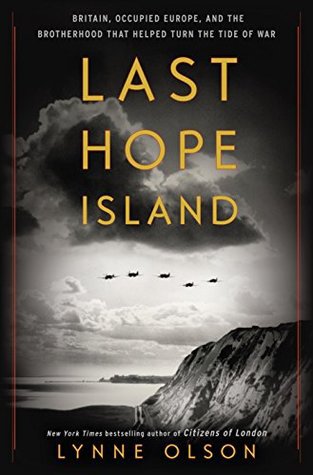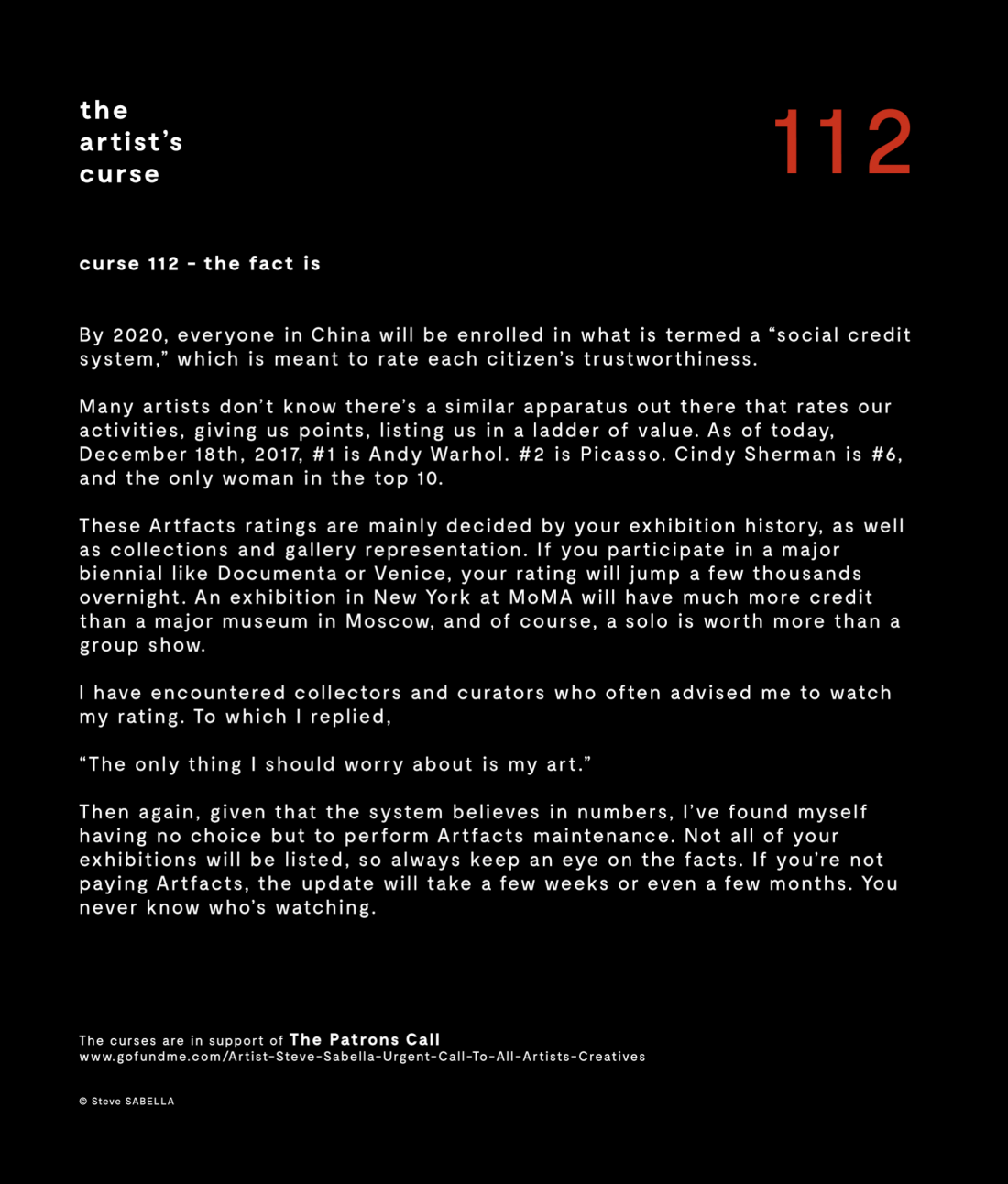Marvels
Author: Kurt Busiek
Illustration: Alex Ross
Original Release: 1994
Digital Release: 2009
Publisher: Marvel
Purchased on Amazon.com
Beware of Spoilers.
Meet Phil Sheldon, your (usually) mild mannered newspaper photographer. He’s like any other American photographer, hoping to make it big by going overseas to photograph the chaos from what would become known as World War II. When the opportunity does present itself, Phil – along with his pal, John Jonah Jameson, and millions of other New Yorkers – find his city becoming the headquarters/battleground for costumed avengers. Phil eventually names these super-powered beings “Marvels” and attempts to document their adventures with photographs.
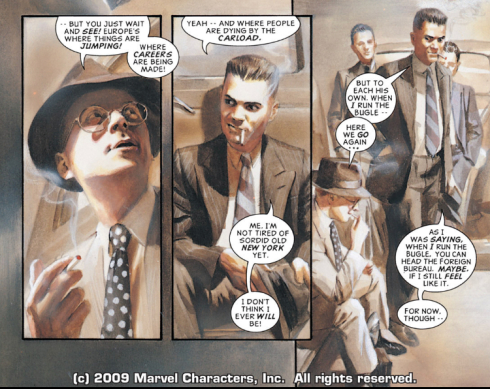 Phil Sheldon (right) John Jonah Jameson (left).
Phil Sheldon (right) John Jonah Jameson (left).
This enjoyable comic begins in 1939 with the original Human Torch telling his story. It introduces the ruler from the sea, Namor, aka The Sub-Mariner and tells a great story of his off-and-on experiences with the Human Torch and New York City. Phil Sheldon finds himself unsure of these beings and does what he can to document their battles. He even puts his life on the line and shoots their battle from a rooftop as the city is being flooded by a massive tidal wave. He survives, but does lose an eye when he is hit by debris during the battle, and dons an eye patch for the rest of the story.
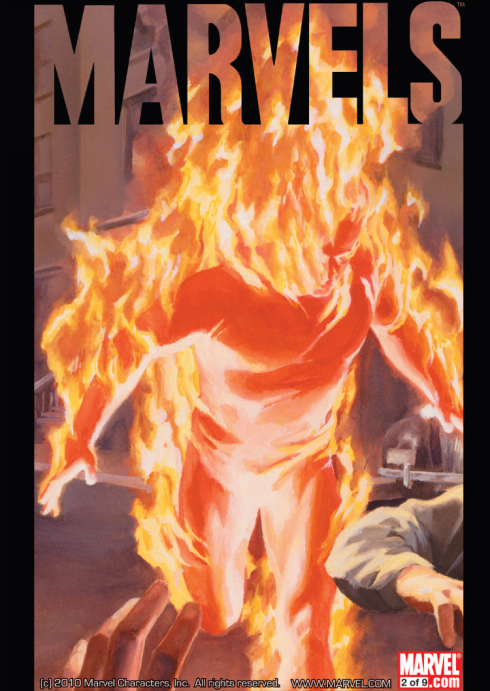 Human Torch
Human Torch
The chapters that follow introduce more heroes and villains, and depict how people in ordinary life are affected by their presence. Reed Richards and Sue Storm’s wedding was the talk of the city as were veterans of World War II claiming that Captain America rescued their unit in battle. The heroes were treated and labeled as celebrities. Phil’s character is also fascinated with these Marvels and has hopes to publish his photographs into a book. He eventually meets and works beside chain-smoking investigative reporter, Ben Urich.
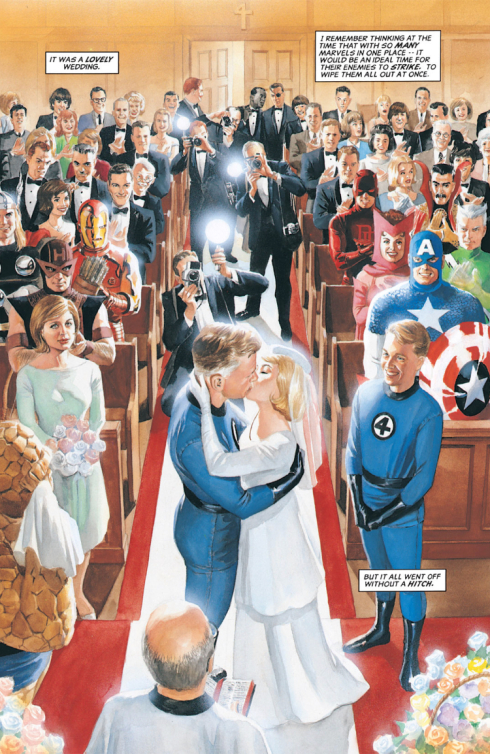 Reed Richard’s and Sue Storm’s wedding.
Reed Richard’s and Sue Storm’s wedding.
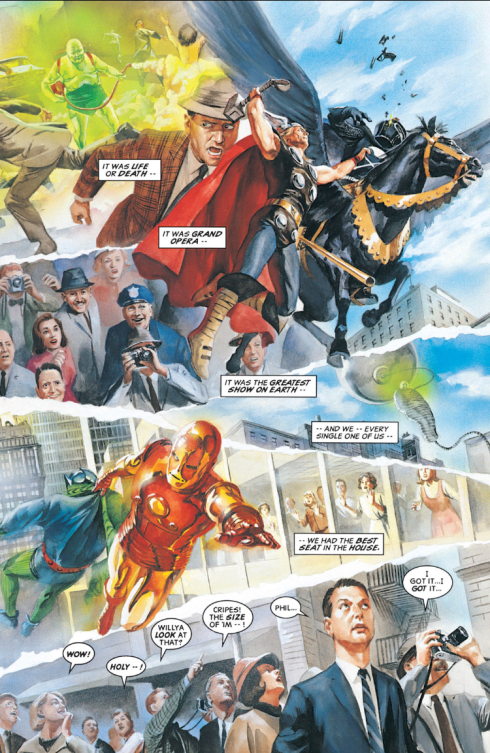 New Yorkers fascinated by the Marvels.
New Yorkers fascinated by the Marvels.
However, these famed heroes are thrown under the bus as fast as they are loved by the community. If they fail (such as the time when The Fantastic Four could not defeat Galactus and a shiny man on a silver surfboard (Silver Surfer) saved the city), the people lose faith in them. The comic does a great job of showing how society can quickly turn on someone, but also restore faith in them.
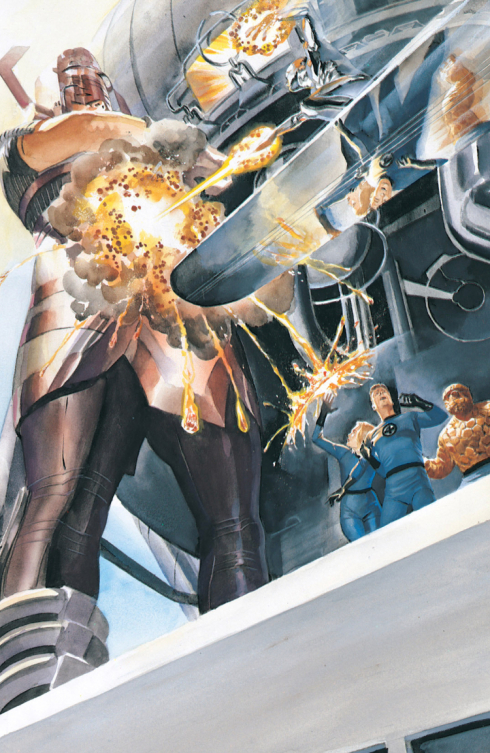 The Silver Surfer taking on Galactus as the Fantastic Four observe.
The Silver Surfer taking on Galactus as the Fantastic Four observe.
The story moves on from decade to decade, and Phil is in it raising a family and working hard to photograph the Marvels. It is not until the 1960s that things get really tense for the city of New York and the surrounding suburbs. The Marvels are well-known and trusted by the average person, but there is a new group of “freaks” that are causing everyone to panic and want to destroy these uncanny individuals. Enter the mutants.
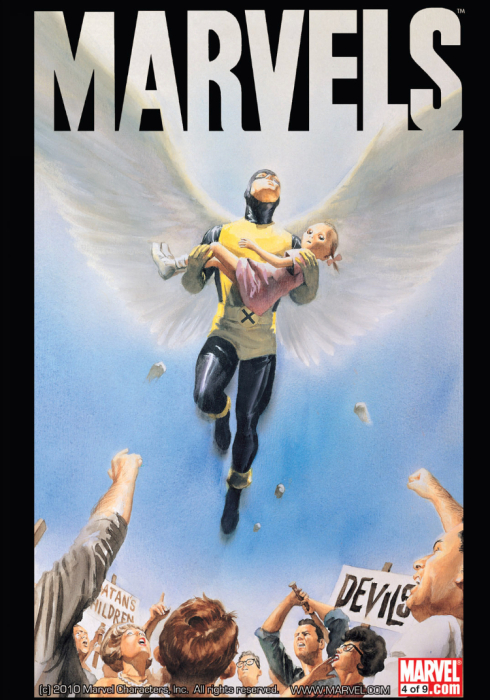
Phil finds himself disturbed by these vigilantes who call themselves the X-Men. He even finds himself in a mob trying to confront them. Phil ends up throwing a brick at Iceman. This event haunts him, causing him regret, but also fear due to the leader’s (Cyclops) response to Iceman “They’re not worth it.”
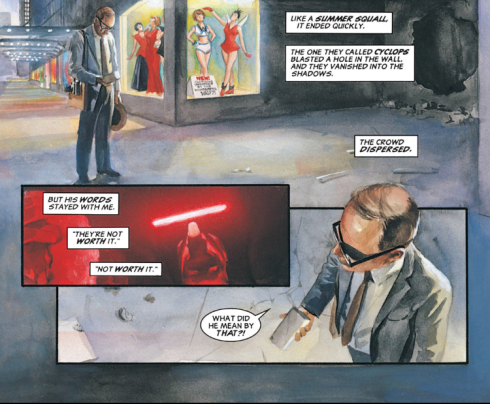
Sadly, it takes his two young daughters befriending a little mutant girl to change his feelings about the people who were born different. The fear in that little girl’s face sets Phil straight.
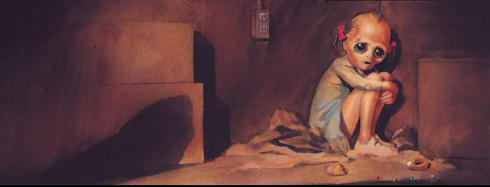
The story gets really intriguing as Phil dedicates his time (and the rest of the story) to prove that these mutants and Marvels are not guilty of crimes that the media is accusing them of. He ends up on the other side of the debate against his old friend, and now editor-in-chief of the Daily Bugle, J. Jonah Jameson. Phil despises Jameson’s young photographer, Peter Parker, and his quest to cash in on taking photographs of Spider-Man looking like a criminal. The writing is clever!
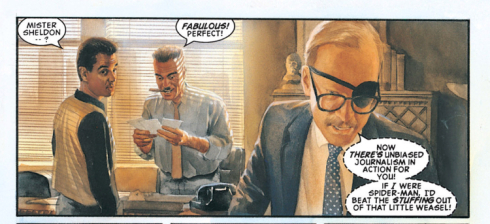 Peter Parker (left), J. Jonah Jameson (center), and Phil (right). Phil is referring to Peter.
Peter Parker (left), J. Jonah Jameson (center), and Phil (right). Phil is referring to Peter.
If Phil could just prove that Spidey didn’t murder Police Captain George Stacy (as the Daily Bugle claimed), he would consider his career a success. He eventually interviews the criminal Doctor Octavius, from prison, to get his side of Captain Stacy’s death. After running into dead ends while Spider-Man’s reputation continues to get worse, Phil decides to meet with Captain Stacy’s daughter, Gwen. From Gwen, he learns about the not-so-popular side of the story; Gwen, just as her father did, sees Spider-Man as a hero and not guilty of any crimes.
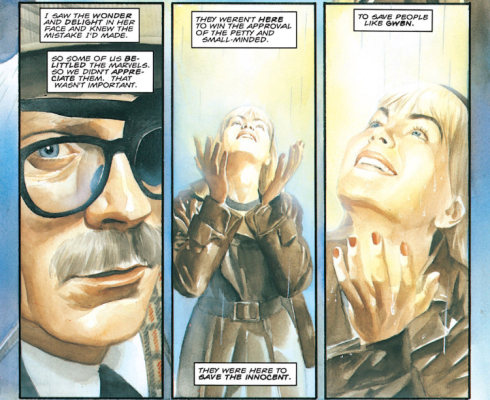 Phil with Gwen Stacy.
Phil with Gwen Stacy.
Phil learns a lot during his visit with Gwen. Sadly, he eventually witnesses her death at the hands of the Green Goblin, but clearly observes Spider-Man attempting to save her life.
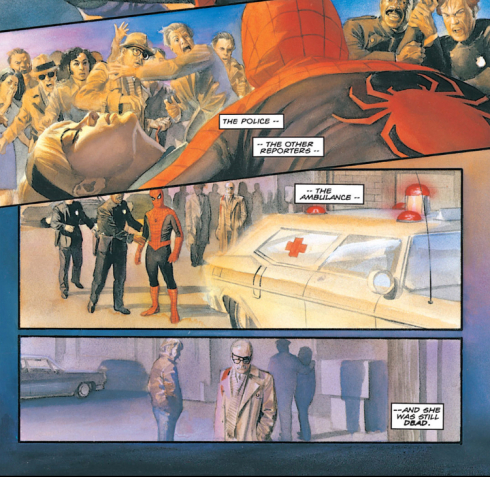
He sadly never gets his book published, and never gets to clear Spider-Man’s name though. The story ends with him walking away from it all to spend much needed time with his wife and daughters. The death of Gwen made Phil realize his priorities, and he didn’t want to be away from his family.
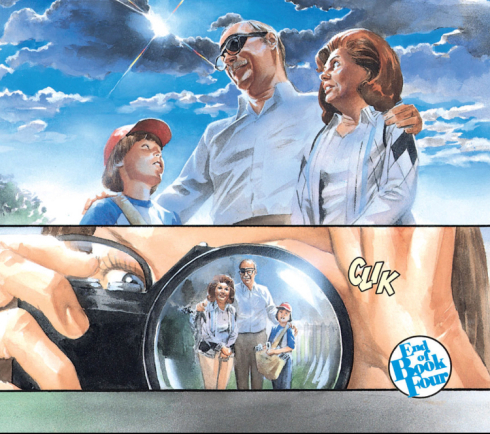
The Pros: It was great to see Phil, and other side characters, such as his wife, Doris, and J. Jonah Jameson, age. They are all young people in their prime when the story begins, but are balding or have grey hair when the story ends.
The writing is clever and fun to read with Phil’s adventures tying into legendary comic book stories.
The change in Phil’s heart toward the mutants was truly great to read. It teaches that it is never too late to change how we treat others who are different than us.
The death of Gwen Stacy was just as emotional from Phil’s point of view as it was from Spider-Man’s (Spider-Man: Blue).
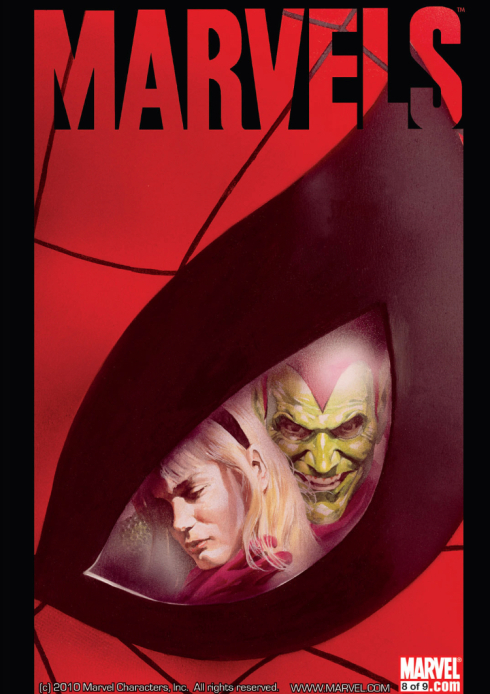
The artwork is something to see. It is some of Alex Ross’ earlier work, and it is just as incredible as his later work.
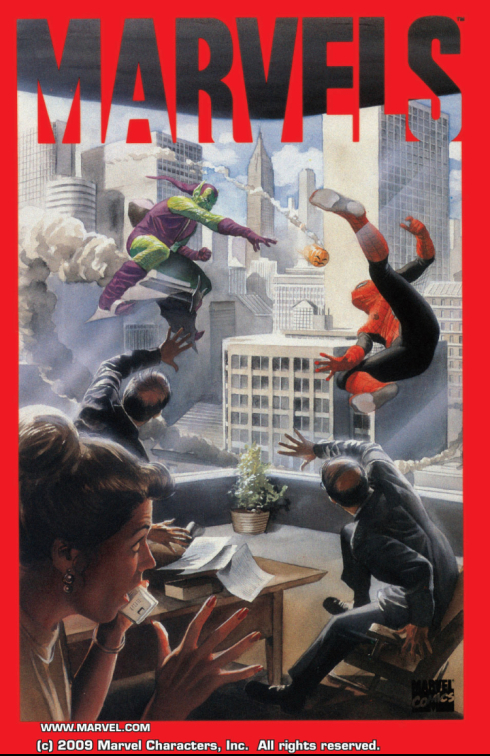
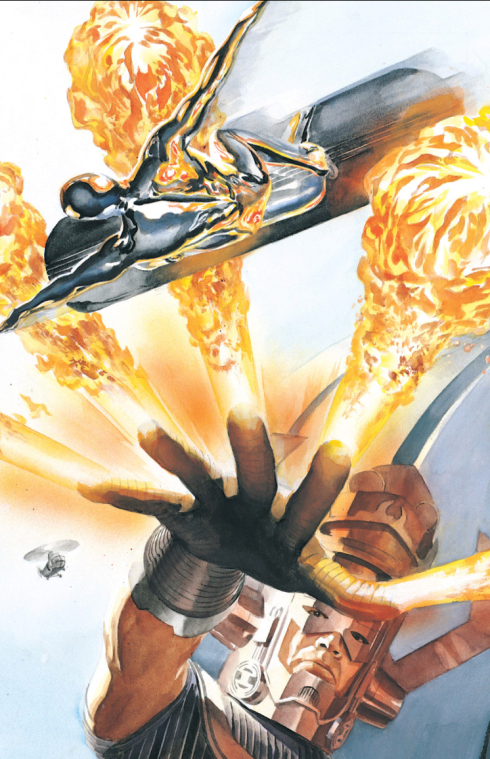
The Cons: J. Jonah Jameson’s flat top.
Marvel at some of the greatest characters ever written.
Jer gives it 5/5.
Advertisements Share this:

